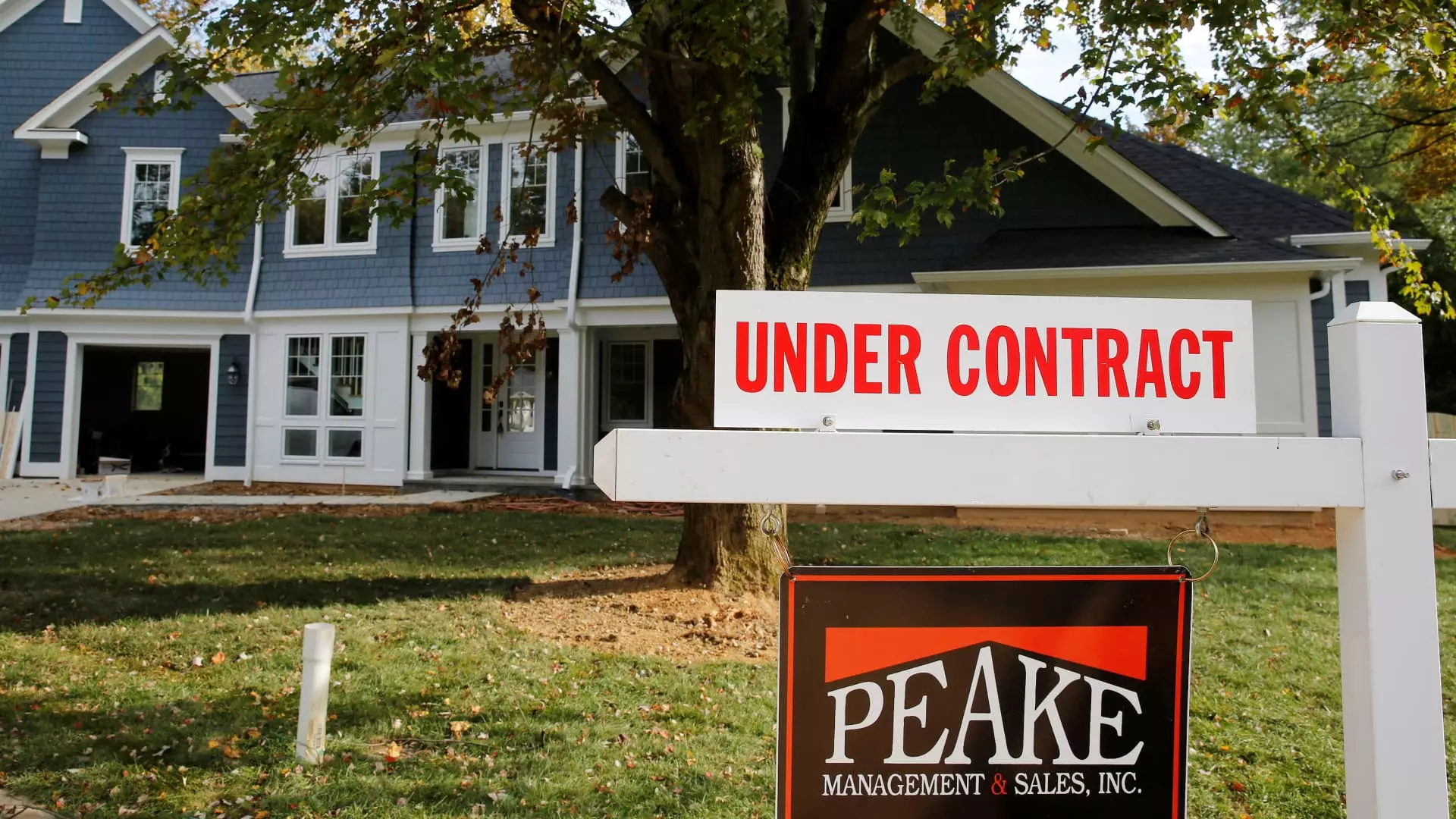The real estate market experienced a notable shift in September, as pending home sales surged by 7.4% compared to the previous month, according to the National Association of Realtors. This statistic defied expectations, as analysts had projected only a modest 1% increase. Significantly, September marked the highest level of pending sales since March, also reflecting a 2.6% year-over-year increase. These pending sales are indicative of current buyer activity, as they represent signed agreements for home purchases, offering a real-time view of market demand.
One of the most striking elements of the recent sales increase is the sensitivity of homebuyers to fluctuations in mortgage rates. Throughout August, the average rate for a 30-year fixed mortgage saw a gradual decline, reaching a low of 6.11% by mid-September. This decline was instrumental in sparking buyer interest, allowing more individuals to engage in the market. However, this momentum was short-lived, as October saw rates climb back up to slightly over 7%. The correlation between mortgage rates and buyer activity is pivotal; when rates are favorable, buyers are more active, but when they rise, the opposite trend often ensues.
Analyzing the real estate landscape regionally reveals varying trends across the country. The Northeast and West both saw year-over-year gains in pending sales, with the West experiencing the most significant increases. This regional discrepancy can be attributed to various factors, including the higher home prices in the West, where buyers are more incentivized to act when mortgage rates dip slightly. Conversely, the Midwest and South displayed flatter trends in pending sales, indicating that regional economic and demographic factors continue to play a crucial role in shaping market behavior.
Despite the recent uptick in pending sales, challenges lie ahead for potential homebuyers. While the 10% increase in mortgage demand year-over-year—as reported by the Mortgage Bankers Association—highlights a continued interest in homeownership, it’s important to note that demand levels remain historically low. With mortgage rates creeping back towards the 7% mark, affordability becomes an increasingly pressing issue. Observations from industry experts like Selma Hepp of CoreLogic suggest that the rebound observed in September’s pending sales may be short-lived. They argue that the current trajectory of mortgage rates could hinder any significant gains in home sales for 2024 when compared to 2023.
Looking ahead, the outlook for the housing market appears mixed. Lawrence Yun, the chief economist for the Realtors, emphasizes the potential for further growth should job opportunities expand, inventory levels rise, and mortgage rates stabilize. However, the volatility in mortgage rates indicates that both buyers and sellers must remain vigilant. As the market responds dynamically to shifts in economic conditions, stakeholders—from buyers to policymakers—will need to adapt their strategies to navigate this ever-evolving landscape effectively.

